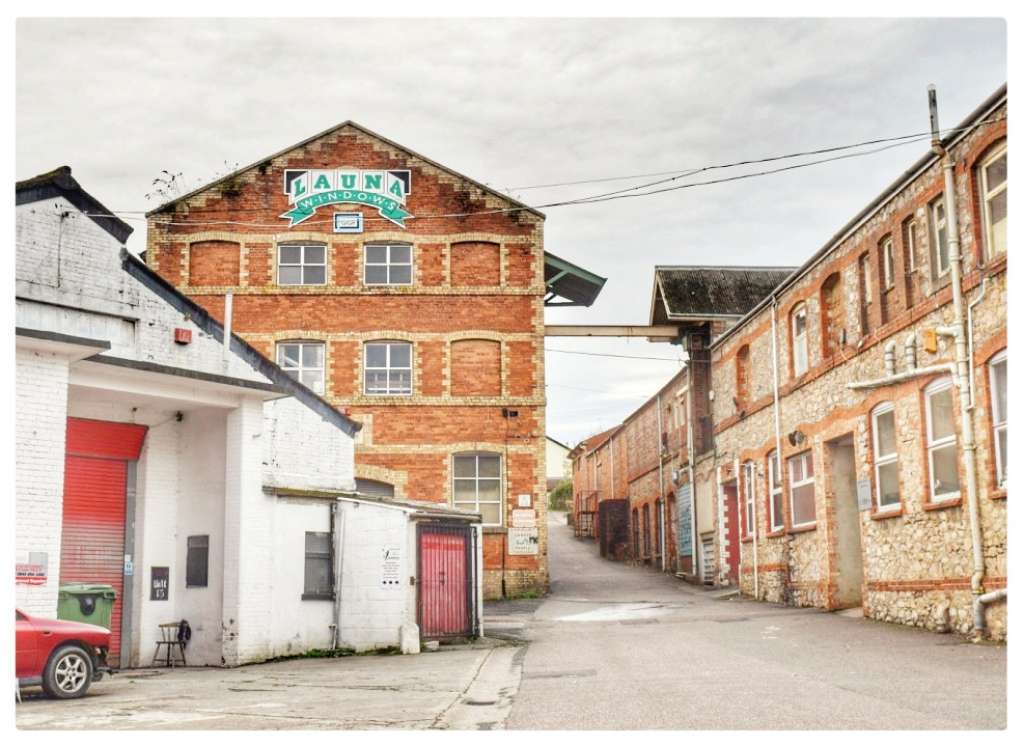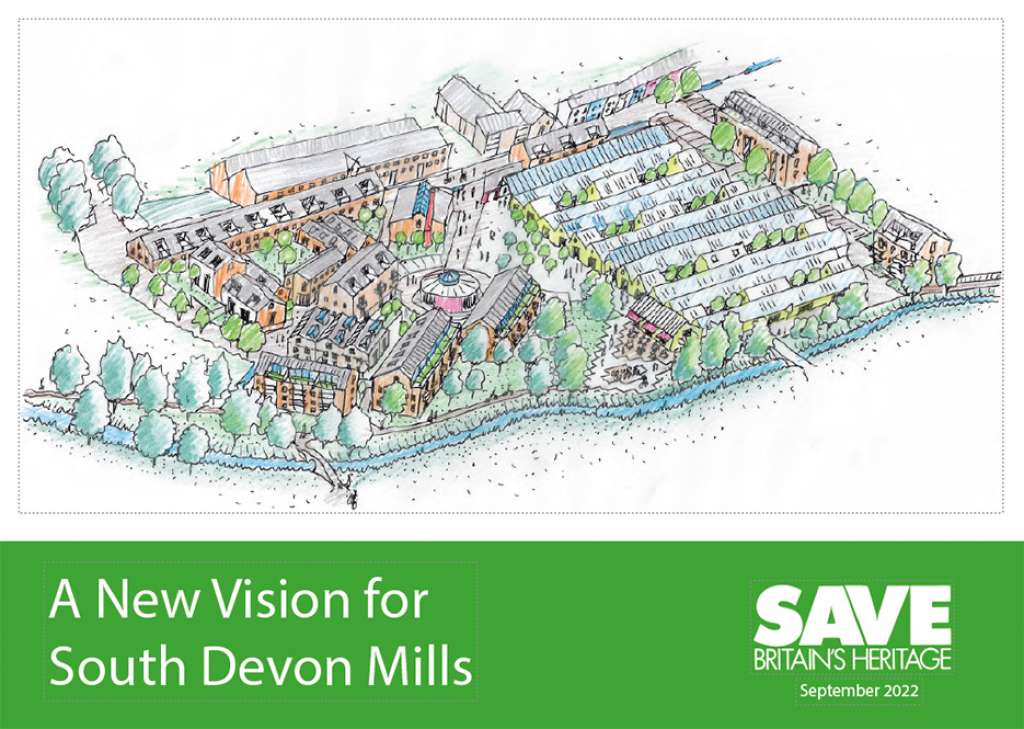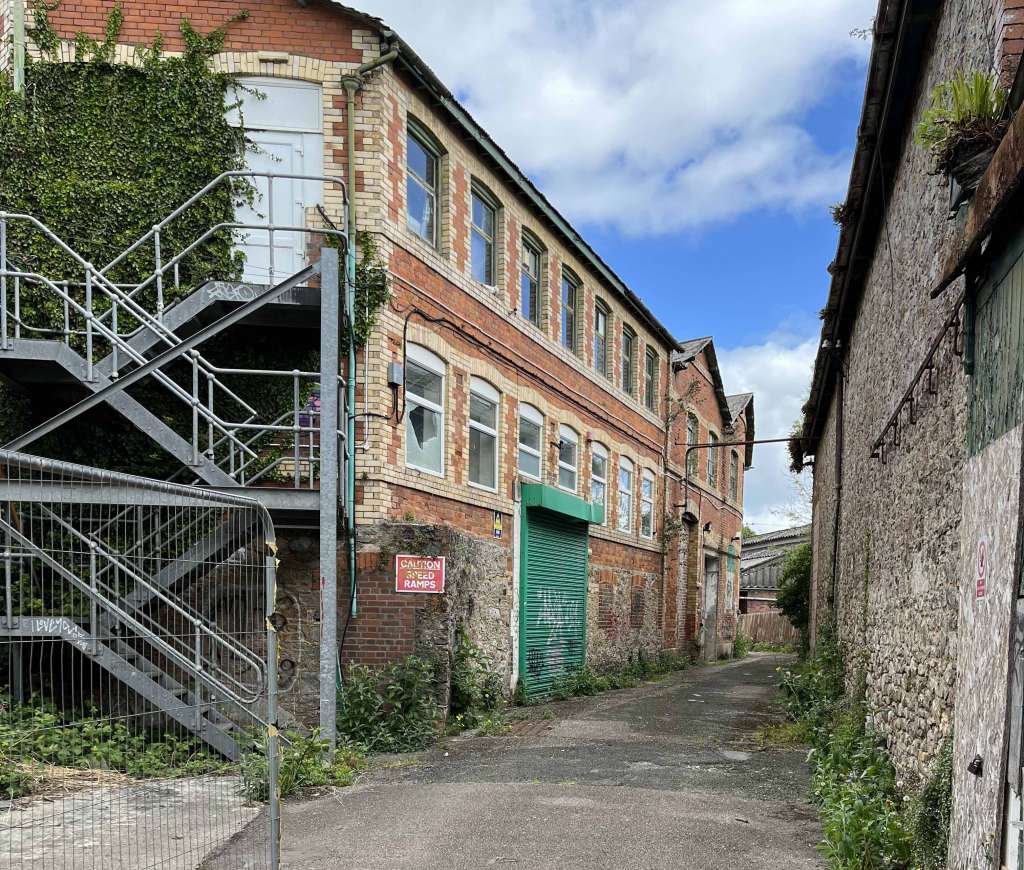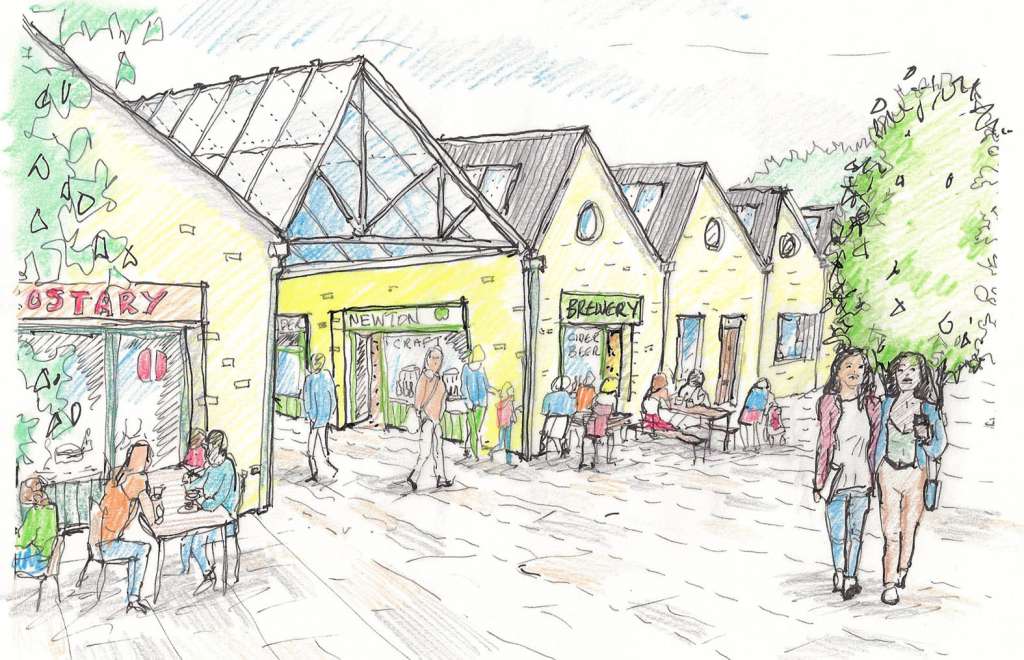PRESS RELEASE: SAVE reveals alternative vision for threatened Devon mills
‘Make these south Devon mills hum with life again’
16th September 2022
A large enclave of attractive former mill buildings standing beside a river walk in Newton Abbot, South Devon, is under threat. In response, SAVE Britain’s Heritage has commissioned architects to produce a new vision for retaining the historic buildings.
Our vision, designed by architect Jonathan Dransfield – known for his acclaimed revival of the Perran Iron Foundry outside Falmouth – showcases a means of transforming Bradley Lane Mills into a lively mixed community for families to live, work and socialise just 500 metres from the centre of this historic railway town.
A planning application is anticipated imminently from developer Lovell Homes. It is expected to seek the complete clearance of the site – yet local people have consistently said they wish to see the mill buildings retained as part of any redevelopment.
Dransfield’s proposals for SAVE show well-designed homes surrounded by inviting public and private open spaces. There is a strong live/work element which would make the neighbourhood truly sustainable. This draws on the “15-minute city” concept of having key amenities within walking distance, the merits of which became clear during the pandemic.
Marcus Binney, executive president of SAVE Britain’s Heritage, says: “Save has been championing the rescue and revival of historic mills for over 40 years. Historic industrial buildings have a special appeal and tenants and visitors find them appealing as places to live, work and explore. These are illustrated in our books, Bright Futures and Big Saves, and demonstrate the appetite for reusing groups of mill buildings to bring business back into country towns.”
Jonathan Dransfield, architect of the new proposals, says: “I’ve been involved in numerous projects including extraordinary heritage building which we’ve rescued from nothing and transformed into amazing communities. Bradley Lane Mills has more potential than anything I’ve seen before. There is so much going for this site, the council would be irresponsible not to take this opportunity to retain these buildings and see how much this site can add to the existing town centre.”
Newton Abbot & District Civic Society says: “We are grateful for the visionary design proposed by Save Britain’s Heritage and the architect Jonathan Dransfield, as a progressive step in our ongoing work to protect this key historic site for Newton Abbot and see it flourish into the future, as it has so many times before.”
SAVE’s new vision
Our vision is for a mixed neighbourhood, a lively part of the town rather than a cul-de-sac suburb. Generous ‘loft style’ apartments are created from the substantial historic mills and handsome new buildings are placed to form public and private urban spaces and create attractive new homes. An essential aspect is to ensure a significant proportion of the new housing is affordable and accessible. A mixed neighbourhood is a mixed community.
This is augmented with space for a creche and local shopping facilities. The spaces in the live/work village are envisaged as affordable ‘shells’ which craftspeople and start-ups can tailor to their own needs and budgets.
Bradley Mills Creative Quarter will be a great place to live, offering 111 dwellings and 28 affordable housing units with outside space, compared with only 89 dwellings and 18 affordable housing units in the council’s proposed scheme.
Although the anticipated developer scheme promises a higher proportion of affordable housing, the SAVE scheme could be amended to provide the same proportion if it receives the same amount of public funding as has been offered to the developer. SAVE is concerned that the demolition has been prompted by a Government stipulation that funding should only go to new buildings on the site, not to renovated ones. This is in direct contradiction to the Government’s own policies emphasising the need to renovate rather than rebuild, and its legally binding Net Zero commitment. Demolition would be enormously wasteful in carbon terms and is, as our vision demonstrates, entirely unnecessary.
Our vision will retain and revive a part of Newton Abbot full of character and history, filling it with life. The site will be knitted into the town centre and town fringes and will make a virtue of the river walk.
The former Benbow sheds – a series of a dozen 90m-long workshops – will be transformed with glazed arcades giving shelter and enjoyment to the shopping experience, and inner courtyards for residents.
There will be parking but it will also be pedestrian friendly. It will emphatically not be a dormitory where everyone comes and goes by car, which is empty by day and has no street life in the evenings and at weekends. Instead of go-away gates and wattle walls shutting out views of greenery, life can spill out into the street.
History
The site of the current Bradley Lane Mills, also well known as Vicary’s Mills, has a milling history that goes back to the 13th century, and was purpose built to serve the nearby grade I-listed Bradley Manor.
Bradley Mill is mentioned in map records as early as 1661. It was Bickfords paper mill including a millhouse, four mills and offices in Highweek Parish, owned by Mr Turner. Destroyed by fire in 1793 and 1825, and by floods in 1852, it was finally rebuilt in 1883 by the Vicarys.
The company claimed to be the first in England to have tanned ostrich hide, which had a distinctive pattern. After the leather goods marking-up department of Vicary’s closed in 1922, some of its staff set up Carter & Douglas. As Devon Leathercrafts, this went on to trade internationally and by 1972 was likely the second-largest fancy leather goods manufacturing company in the country.
Today the site is owned by Teignbridge District Council, which purchased the west side of the site in 2010, including the former Benbow Interiors and main Mill buildings. The council has since set out its aspiration to bring forward a mixed-use redevelopment, with both the mills site and two adjoining land areas. The long-term goal is for the site to be sold to a developer subject to receiving planning permission.
While a number of the buildings have been neglected and are now at risk of decay, the majority remain solid and characterful structures which the council has identified as non-designated heritage assets worthy of retention in the Local Plan.
Recent press coverage and campaigning by the Newton Abbot & District Civic Society has demonstrated the affection in which the mill buildings are held locally.
ENDS
Notes to editors:
1/ For more information contact elizabeth.hopkirk@savebritainsheritage.org or call the office on 020 7253 3500.
2/ Download a copy of the report here.
3/ SAVE Britain’s Heritage is an independent voice in conservation that fights for threatened historic buildings and sustainable reuses. We stand apart from other organisations by bringing together architects, engineers, planners and investors to offer viable alternative proposals. Where necessary, and with expert advice, we take legal action to prevent major and needless losses.




![SAVE's vision for the Bradley Mills Creative Quarter [Credit: Jonathan Dransfield]](/img/articles/04_Bradley_Lane_Mills.jpg)
